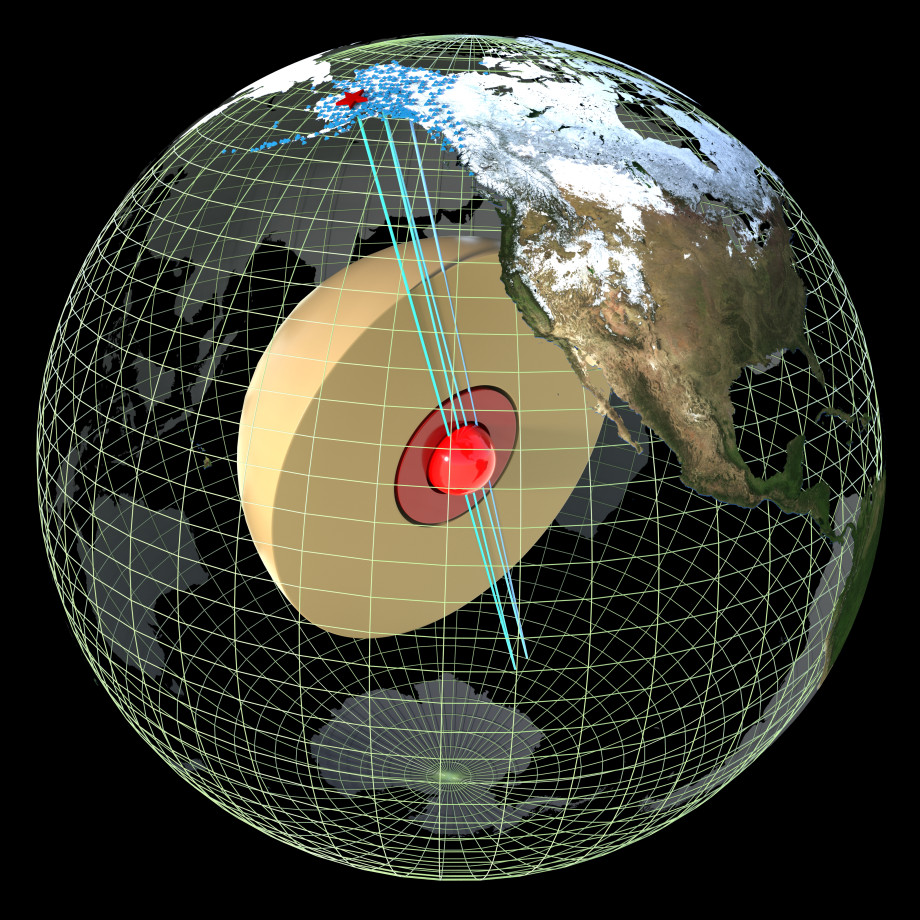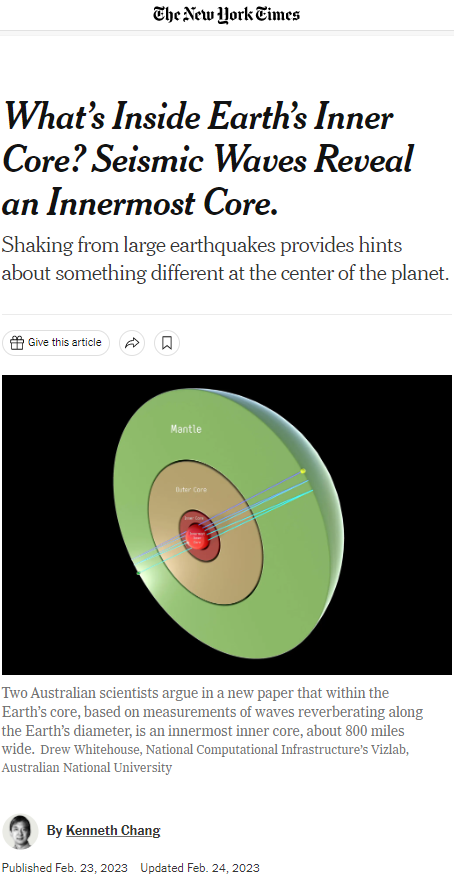The scientific visualisations produced through NCI’s Vizlab play an important role in assisting scientists to communicate their research breakthroughs with both scientific and general audiences. When researchers at The Australian National University (ANU) recently published their major breakthrough on an innermost inner core at the centre of the Earth, the NCI Vizlab was there to help create scientific visualisations, highlighted in leading media outlets around the world.
Research undertaken by Professor Hrvoje Tkalčić and Dr Thanh-Son Pham, from the ANU Research School of Earth Sciences, analysed reverberating waves along the Earth’s diameter from earthquakes to infer there is an innermost Earth core with different properties to the surrounding layers. These findings strengthen the evidence for this distinct layer and could help scientists better understand the Earth’s evolution over time.
Aware of the significance of the findings, Professor Tkalčić asked the NCI Vizlab to help develop a data-based visualisation and scientific illustration to accompany media reports on the research. Drew Whitehouse, one of NCI’s visualisation programmers, worked with the research team to produce an image based on the location of the earthquake receiver stations used in the study. This builds on a longstanding relationship, with the Vizlab having previously collaborated with Professor Tkalčić on a number of publications and research projects, including the world’s first book about the mysterious inner core.

“It was great to be able to reach out to NCI’s Vizlab for their expert assistance to help create some illustrations to accompany the announcement of our work,” said Professor Tkalčić. “In particular, the images created formed an important part of the global media reporting on our research, including a feature in The New York Times. The professional quality visualisations are a useful aid to communicate research methods and outcomes, to both scientific and non-technical audiences.”
The Vizlab has been a part of Australia’s supercomputer landscape since 1990, established at The Australian National University alongside precursor machines to NCI’s current Gadi supercomputer. The small team of staff have diverse backgrounds, ranging from mathematics and computational chemistry, to engineering and animation. Working with researchers from a range of disciplines, the NCI Vizlab team generate images, videos and virtual reality experiences to enhance the scientific discovery process and communication of results, using many of the same visual effects techniques and software as are used in modern cinema.

Drew Whitehouse said, “It’s a thrill to work with researchers like Professor Tkalčić on projects like this. Bringing our visualisation expertise to their great work helps the outcomes travel further and benefits the scientific process at the same time.”
Professor Tkalčić is excited by the potential of further planned collaborations with NCI’s Vizlab team, including producing animations based on current research data. “Geophysicists use inference, as we cannot see the objects we are interested in themselves. Because of this, scientific visualisation is a very relevant technique. Seeing the data from different angles and in three dimensions can help unlock insights and assist with the interpretation of this data.”
The research paper Up-To-fivefold reverberating waves through the Earth’s center and distinctly anisotropic innermost inner core, published in Nature Communications, is available here.